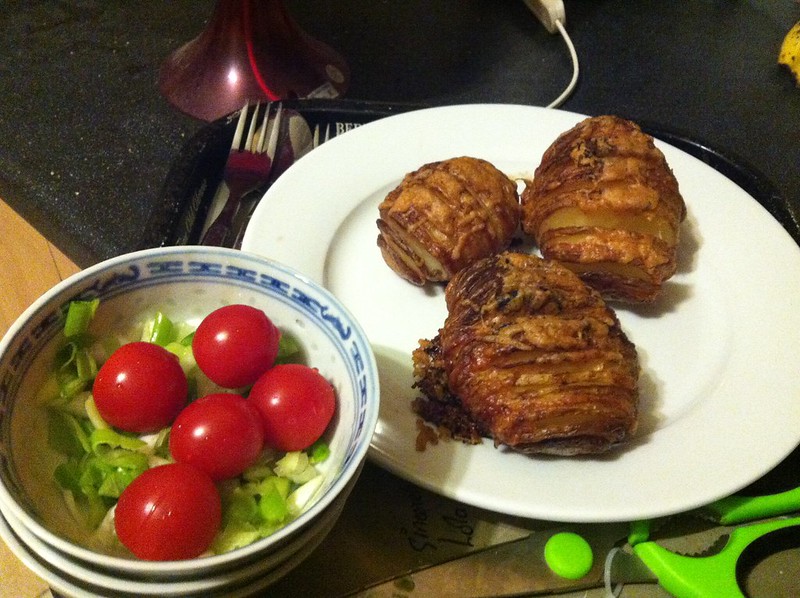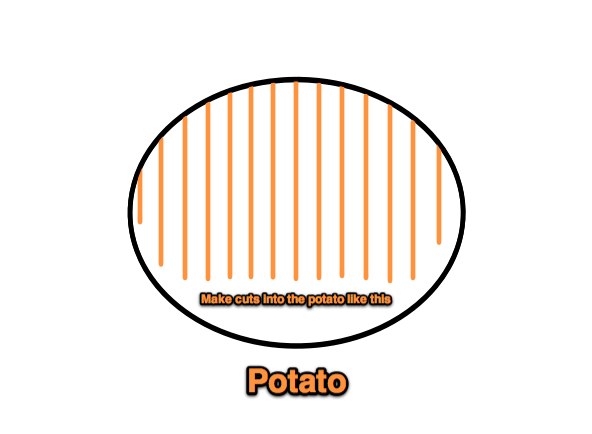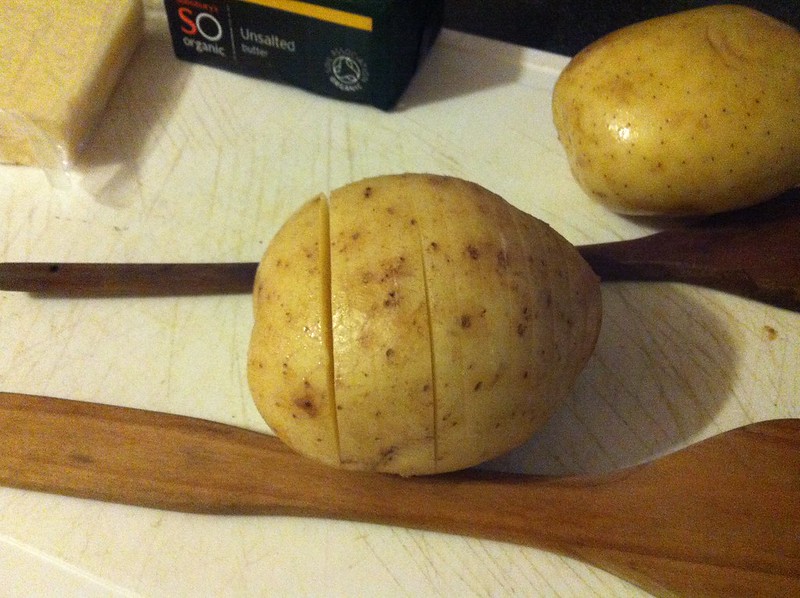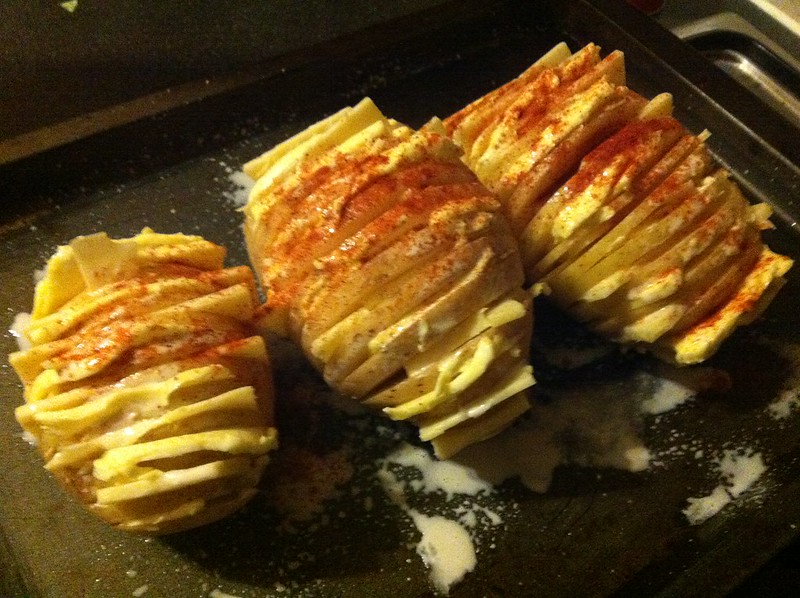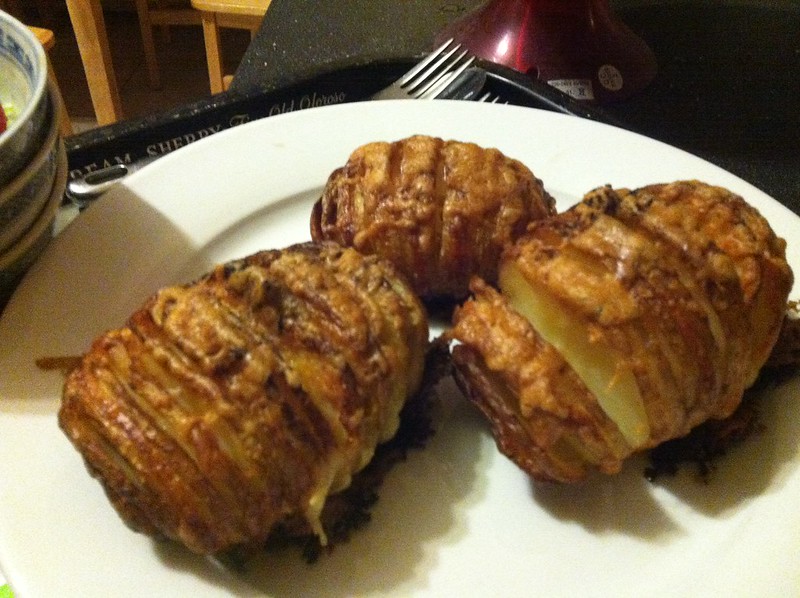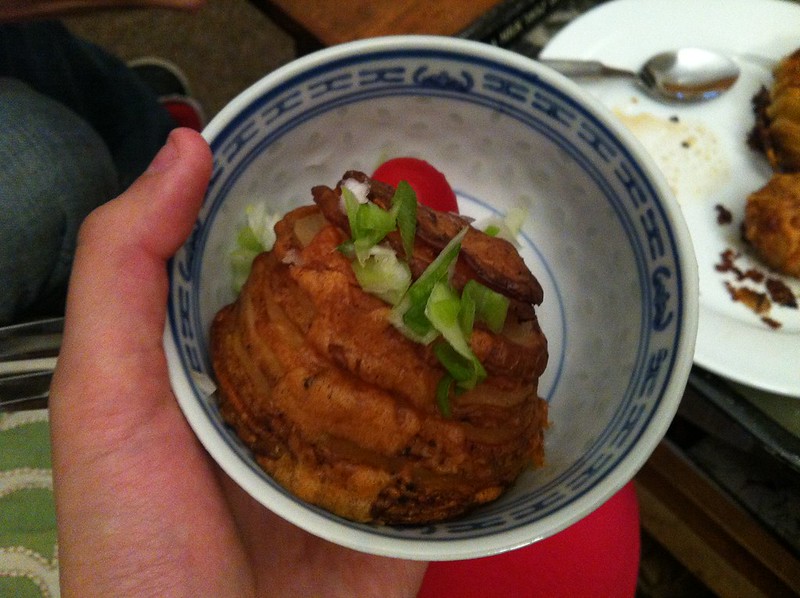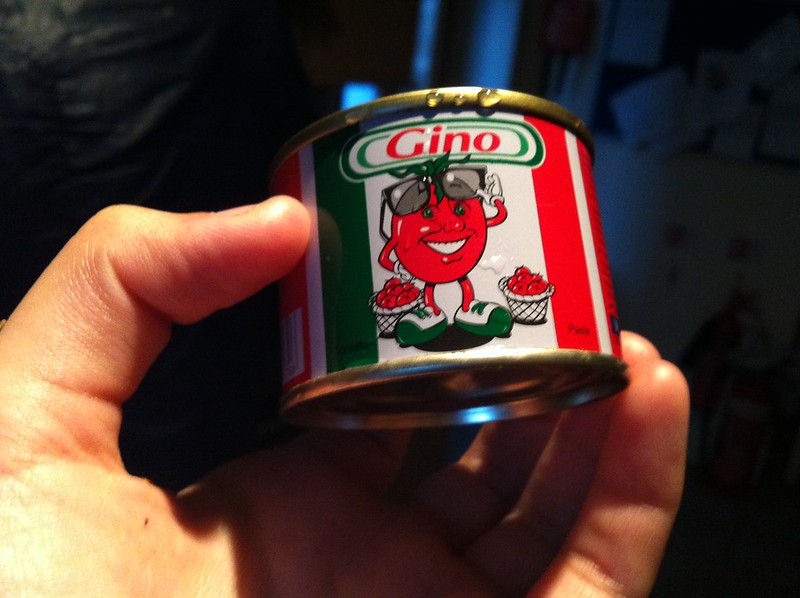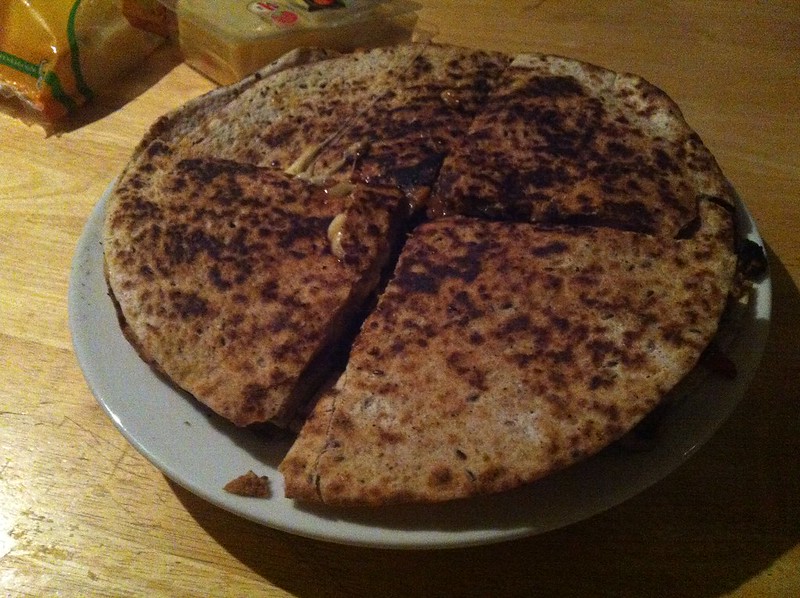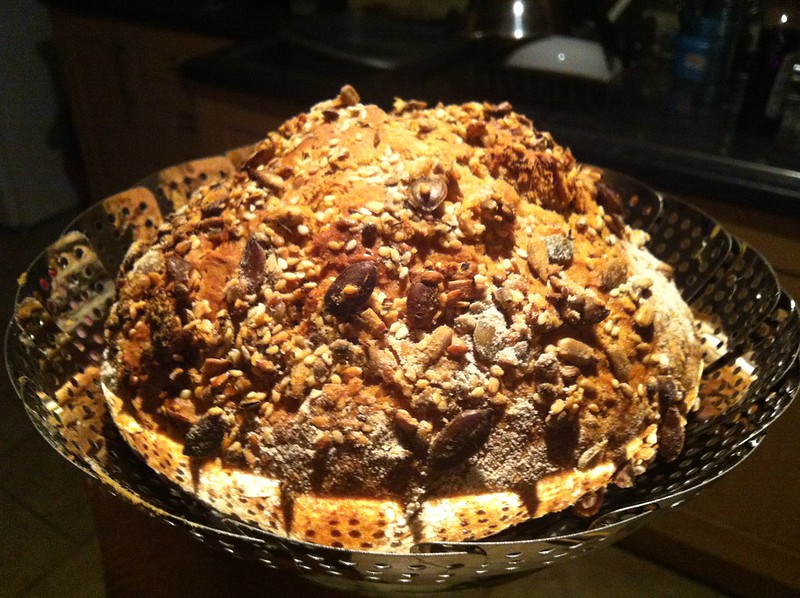
I've decided that I should start a new food blog to mark what seems to be a new start and a new year. I'm curious to do some epic food experimentation but constrained by budget. After returning from Ireland, I figured it would be good to learn how to replicate a kind of soda bread - a bread which seemed so rich and cakey at times, with addition of different ingredients - and here above is the resultant loaf (Success!). Having never ever baked a loaf of bread before, I began with a variation on the
Airy Fairy Easy Peasy Soda Bread recipe from agirlcalledjack.
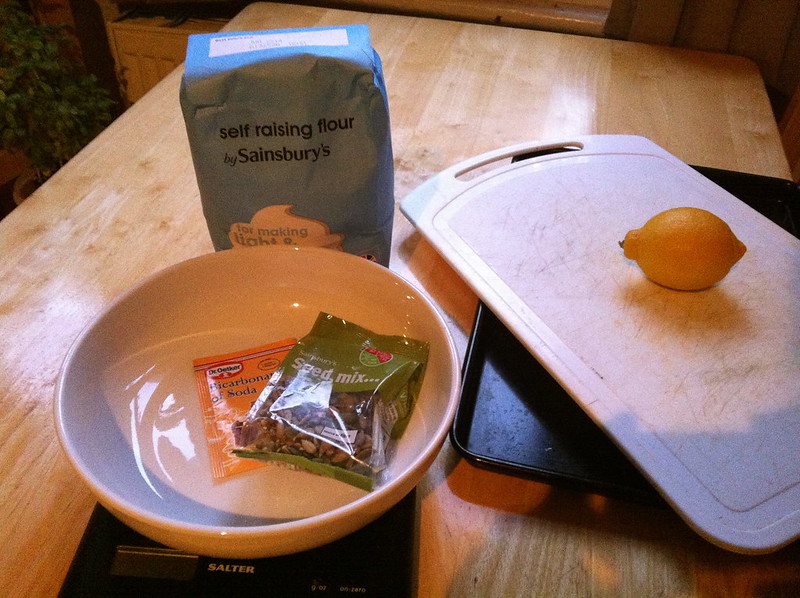 Ingredients:
Ingredients:
200g self-raising flour
1 teaspoon bicarbonate
200ml semi-skimmed milk
half a lemon
Optional, which I added because I had around the house:
half teaspoon salt
one teaspoon dark brown sugar
a packet of seeds
Preheat the oven to 180C. The milk is to be mixed with the juice of half a lemon to set aside to curdle for 15 minutes. During which time you mix all the dry ingredients together and eventually slowly incorporate the curdled milk to form a dough ball. Cut an X on top and bake for 40 minutes at 180C, after which it should be light and should sound hollow when tapped.
Milk and lemon can be substituted with old soured milk or buttermilk. In fact the milk and lemon is a kind of substitution of its own, the acid of lemon or acid in soured milk is necessary to activate the bicarbonate of soda, probably also helping to find a use for soured milk. Yeast was not always able to be obtained, hence the invention of bread made with soda. The cross that is cut on top with a knife is supposed to "ward off the devil and protect the household" [
1].
Another interesting recipe is explained here:
A correspondent of the Newry Telegraph (a newspaper in Northern Ireland) gives the following receipt for making "soda bread," stating that "there is no bread to be had equal to it for invigorating the body, promoting digestion, strengthening the stomach, and improving the state of the bowels." He says, "put a pound and a half of good wheaten meal into a large bowl, mix with it two teaspoonfuls of finely-powdered salt, then take a large teaspoonful of super-carbonate of soda, dissolve it in a half a teacupful of cold water, and add it to the meal; rub up all intimately together, then pour into the bowl as much very sour buttermilk as will make the whole into soft dough (it should be as soft as could possibly be handled, and the softer the better,) form it into a cake of about an inch thickness, and put into a flat Dutch oven or frying pan, with some metallic cover, such as an oven-lid or griddle, apply a moderate heat underneath for twenty minutes, then lay some clear live coals upon the lid, and keep it so for half an hour longer (the under heat being allowed to fall off gradually for the last fifteen minutes,) taking off the cover occasionally to see that it does not burn. This he concludes, when somewhat cooled and moderatey buttered, is as wholesome as ever entered man's stomach. Wm . Claker , Esq., of Gosford, has ordered a sample of the bread to be prepared, and a quantity of the meal to be kept for sale at the Markethill Temperance Soup and Coffee Rooms. Farmer's Magazine. [2]
Curious at the economics of bread making and its associated costs, I did some calculations based on prices of the ingredients which were mainly bought from Sainsburys (Stamford Hill outlet) yesterday. Disregarding the "extras" such as the pinch of salt and sugar, and the electricity/oven/equipment/etc, this is how much the main ingredients for a loaf of homemade soda bread cost [price breakdown of ingredient for each unit of bread is in brackets]:
1.5kg Flour - £1.10 [15p]
0.569ml Semi Skimmed Milk - 49p [20p]
Bicarbonate (pack of 5 teaspoons) - £1.00 [20p]
1 Lemon - 32p [15p]
Thus the estimated cost of baking exactly one loaf of Irish Soda Bread was 70p.
I should add that the seeds were a nice addition, although I haven't quite figured out how to make more seeds stick to the top of my loaf. I'll try to bake different variations of this recipe in the next few weeks...
- - -
See also:
[1]
History of Irish Soda Bread
[2}
Soda Bread History
